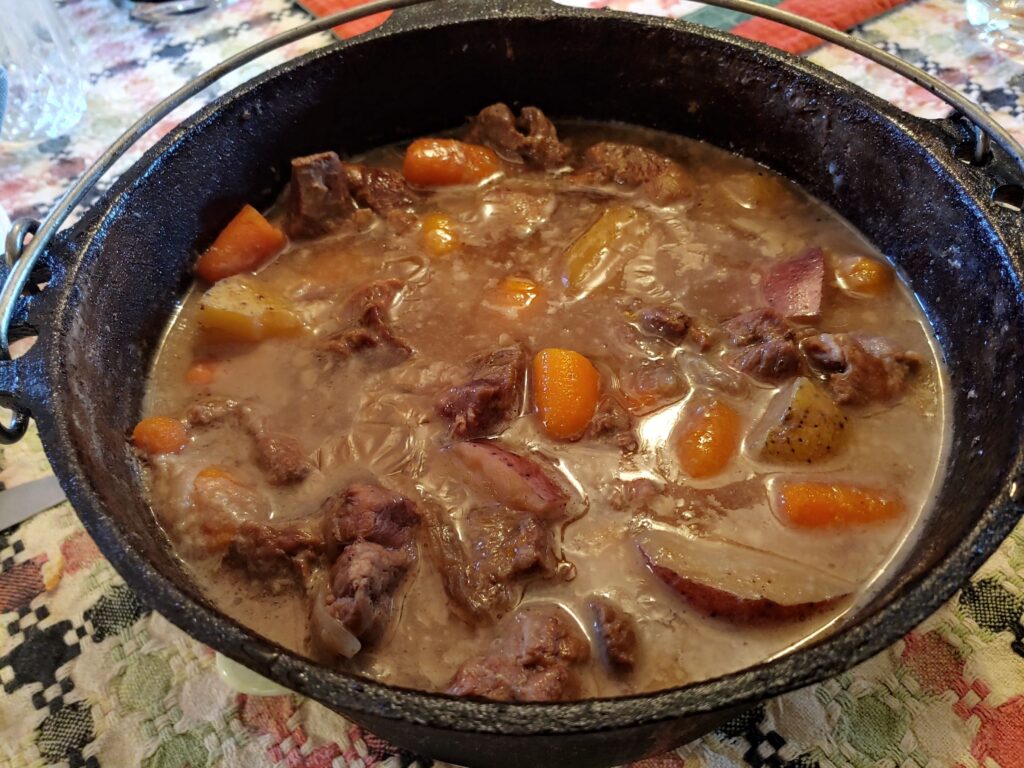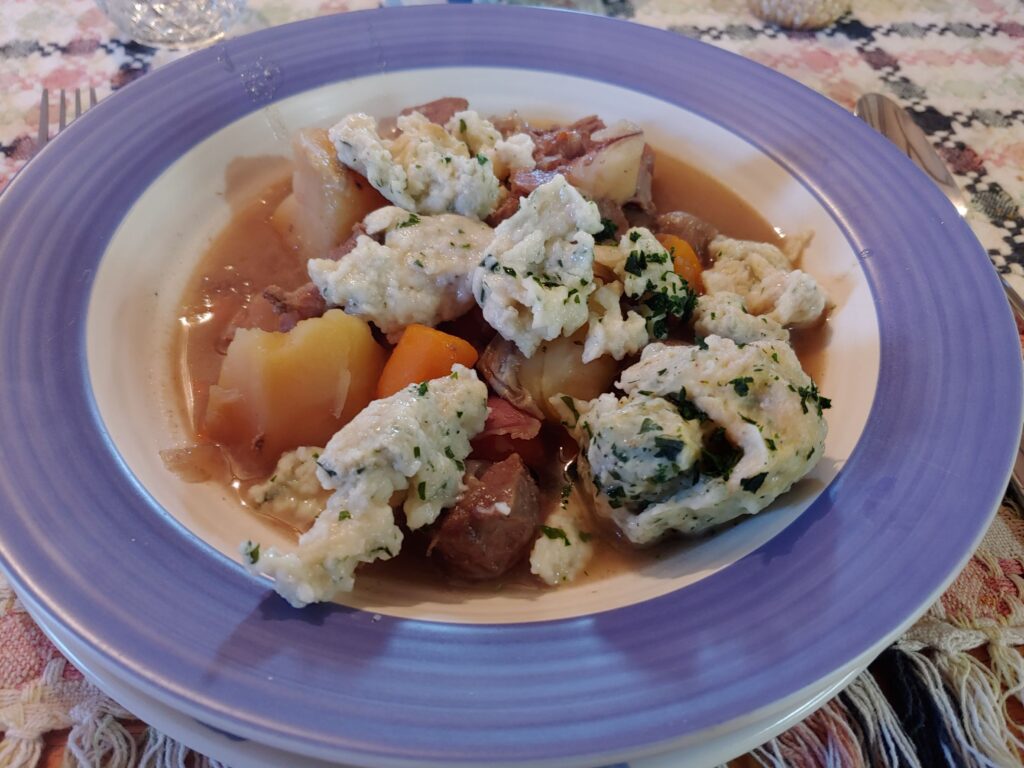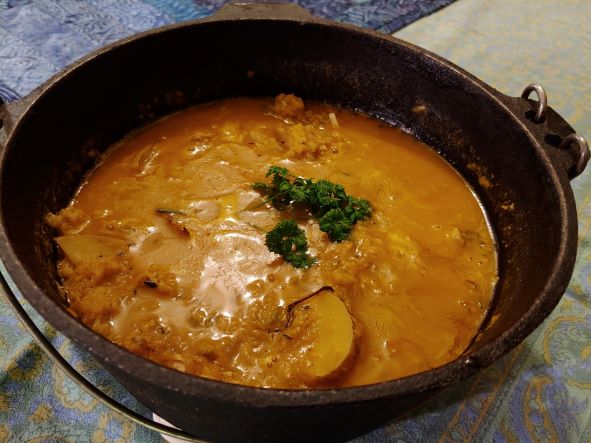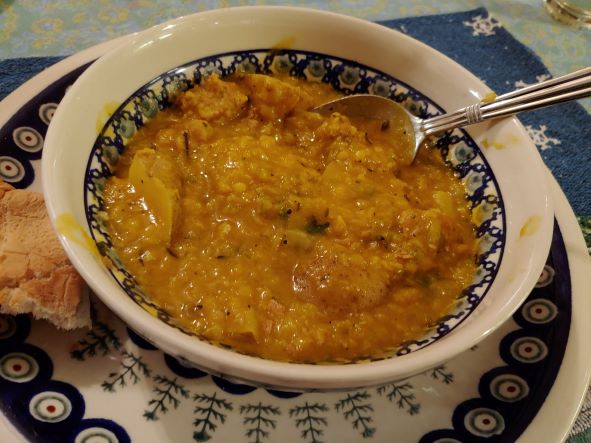This is a variation on the traditional fish soup we use to have back on the block. On the Island and the barrio, the soup was made with several whole fish. The fish was cut into thick slices, highly seasoned and simmered, while the fish head and tails were used to create a fish stock. Nowadays, fish fillets and water can be used instead of a whole fish. Instead of water, you can also create your own fish stock by using half water and half clam juice. Also, in the traditional fish soup, shrimp, clams and even mussels were added.
This recipe simplifies the whole process. It’s Sopa de Pescado y Garbanzos, i.e. fish soup with chickpeas. You just sauté fish fillets (such as cod, haddock, whitefish, etc.) in olive oil with typical Nuyorican herbs. Add water (or the half water and half clam juice) and let it simmer until done. Add canned garbanzo beans and cook 5 minutes more, That’s it. With a crusty whole loaf, it’s a meal for the ages—and perfect for this time of year.
SOPA DE PESCADO Y GARBANZOS
(Fish and Chickpea Soup)
Ingredients:
3 tablespoons olive oil
1 medium onion, peeled and chopped
2 cloves garlic, peeled and crushed
4 cups water (or half water, half clam juice)
3 sprigs fresh parsley
1 teaspoon dried oregano
1 teaspoon fresh thyme leaves or ½ teaspoon dried
1 bay leaf
2 pounds white fish fillets, cut into 1-inch cubes
Juice of ½ lemon
1 teaspoon turmeric
2 (15oz.) cans garbanzo beans, drained
Instructions:
- Heat oil in a kettle or pot. Add onion and garlic. Sauté for 3-4 minutes until onion is soft and tender.
- Add water or stock, parsley, oregano, thyme and bay leaf
- Add fish, lemon juice and turmeric. Stir to mix. Cover and simmer on low heat for 15 minutes.
- Add garbanzo beans and simmer 5 minutes longer. Remove bay leaf and serve.
Yield: 6 to 8 servings.
















